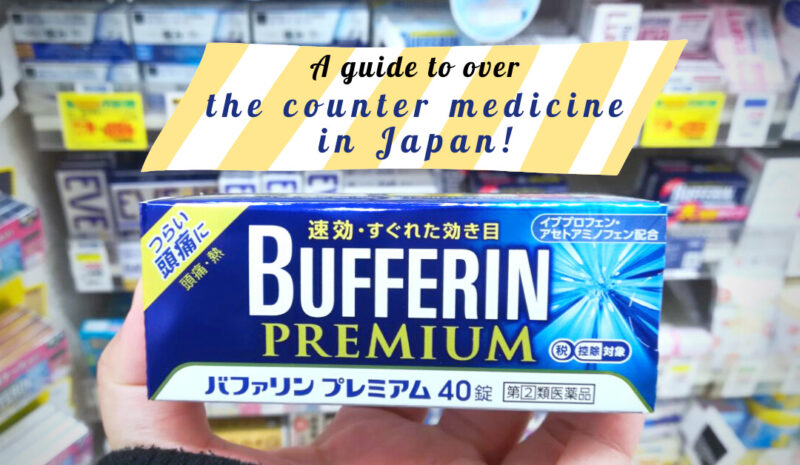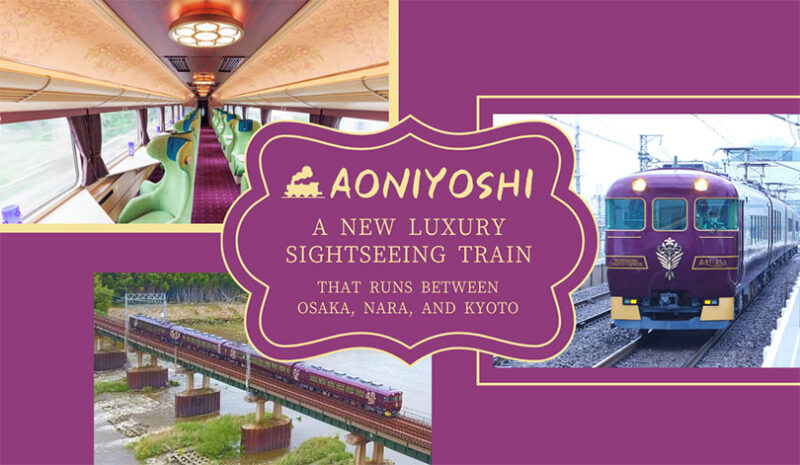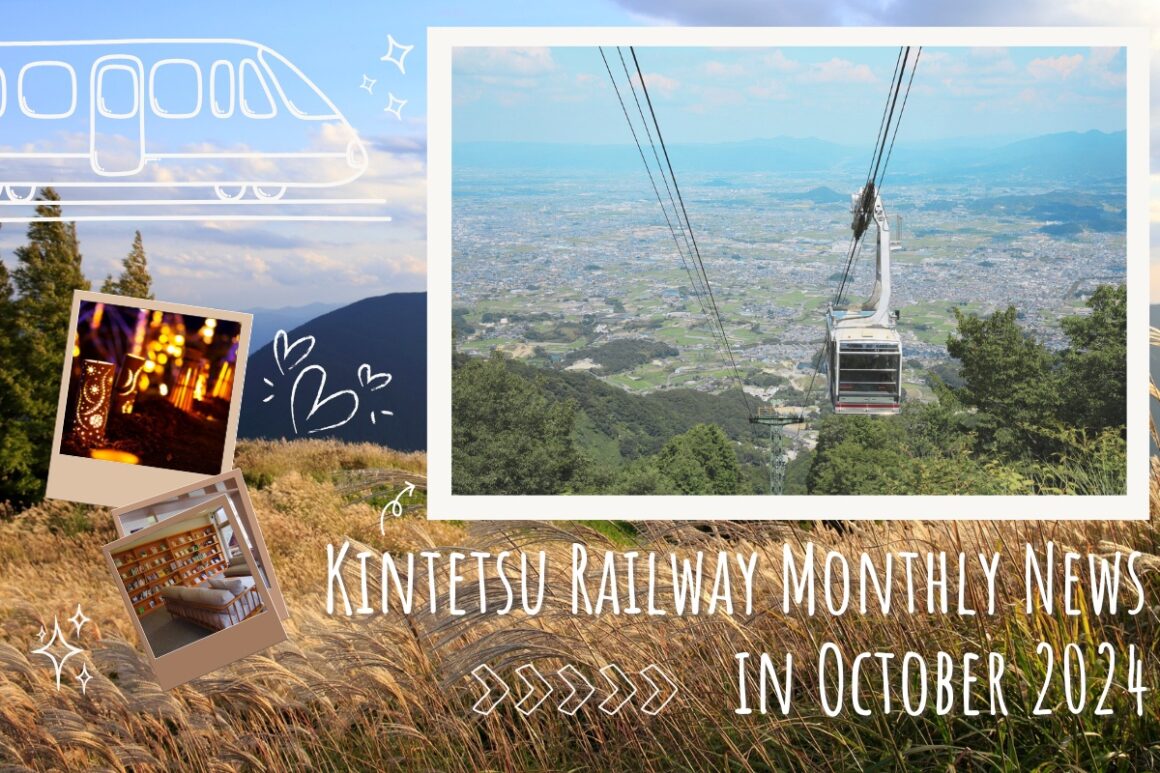10 amazing things to do in Tottori, Japan!
Aug 31, 2020
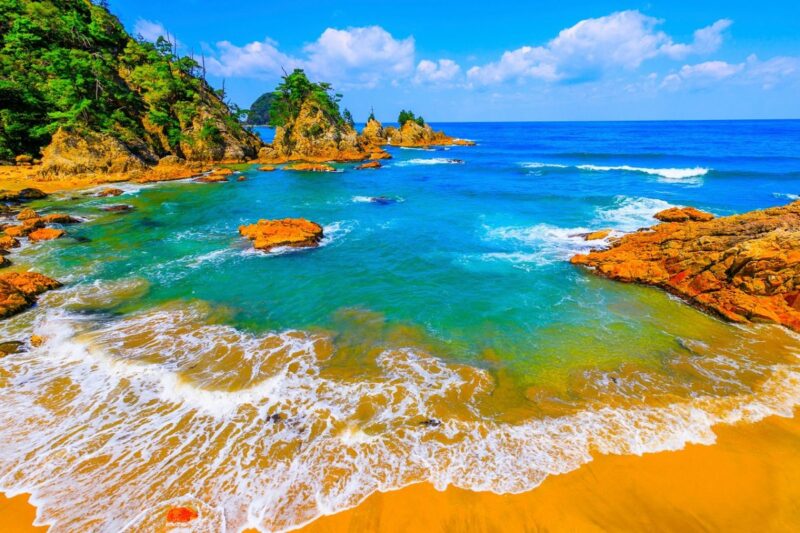
Sits on the coast of the Chugoku Region on western Japan, Tottori is known for its enormous sand dunes, but that barely brushes the surface. If you go beyond the sand dunes, you’ll find numerous Zen spots and a whimsical anime kingdom.
Tottori is a place where you can learn to see things from various perspectives; you’ll find most things have a unique twist here. Often overlooked for its more famous neighbors, Tottori is filled with a lot of surprises and has a lot more to offer to those looking for something off the beaten path.
Index
Recommended sightseeing spots in Tottori:
- Tottori Sand Dunes
- The Sand Museum
- Hakuto Shrine
- Mizuki Shigeru Road
- Mt. Mitoku Sanbutsu-ji Temple
- Conan Town
- Uradome Coast
- Tottori Prefectural Flower Park
- Mt. Daisen
- Daisen-ji
- Kani-meshi
- Tofu chikuwa
- Matsuba crab
- Tottori beef
- White squid
How to get there
Tottori is accesible by airplanes from Tokyo’s Haneda Airport, and the one-way flight duration is 75 minutes. The average one-way fare is about 28,000 yen, and the discounted tickets are usually in between 15,000 yen to 23,000 yen.
Shinkansen doesn’t go to Tottori, but you can partially use the shinkansen and change to the Super Hakuto limited express later. All you have to do is take the Tokaido Shinkansen and transfer to the Super Hakuto limited express at Shin-Osaka Station or Himeji Station. If you JR Pass, you can get on the shinkansen for free using your pass, but still need to pay the fare for Super Hakuto limited express as it partially runs on non-JR tracks.
Recommended sightseeing spots in Tottori
Although Tottori is relatively far from Tokyo, this one prefecture of Chugoku region is worth visiting for its extensive sand dunes, wonderful temples, one-of-a-kind manga town, and its breathtakingly beautiful nature.
Tottori is packed with numerous excellent spots like The Museum Sand, Shigeru Mizuki Road, Sanbutsu-ji Temple, and Uradome Coast.
Here are our picks for the best things to do in Tottori, Japan!
1. Explore the largest sand dunes of Japan
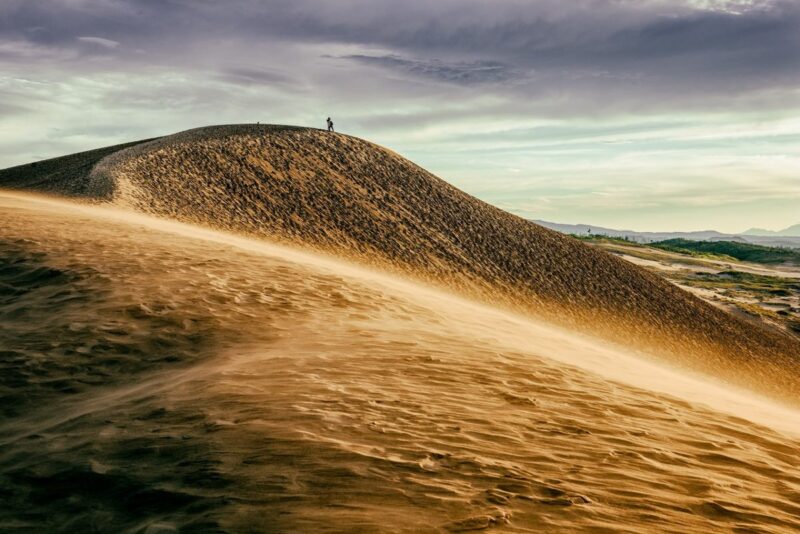
Easily accessible from the center of Tottori City, Tottori Sand Dunes are located on the Sea of Japan coast, and attract over two million visitors every year. The dunes are extremely impressive, and have existed in Tottori for over 100,000 years.
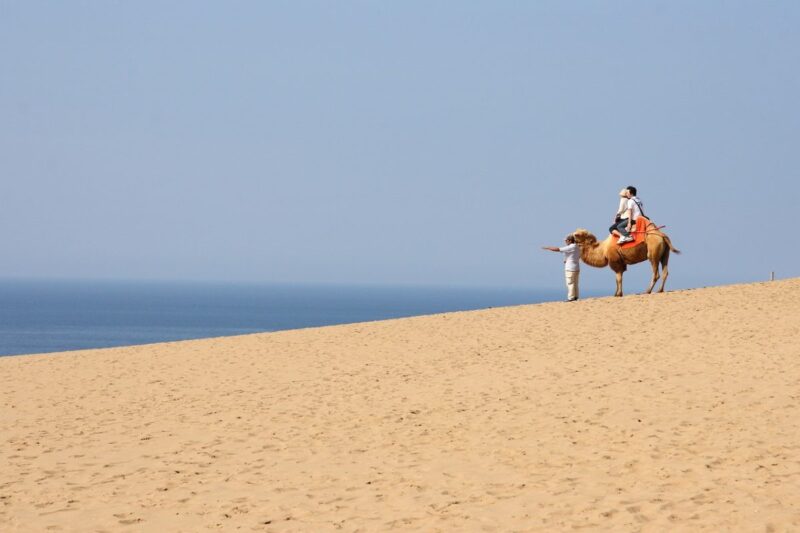
Spending a couple of hours exploring the dunes will be enough to enjoy the splendid view of the sand dunes and the Sea of Japan. You’ll feel amazed and want to snap beautiful photos as much as you can, but there are other activities awaiting you here. One of the most exciting activities to try is taking a ride on one of the dunes’ iconic camels. If you want something more thrilling, you can try paragliding or sandboarding on these amazing dunes.
Tottori Sand Dunes
Open throughout the year
Access: about a 20-minute bus ride from Tottori Station
2. Visit the world’s first indoor sand museum

ThanyathornP / Shutterstock.com
The Sand Museum opened in 2006, and it’s the world’s first indoor sand museum. The exhibit features sand molded into adorable statues; there are numerous famous buildings, people, animals, and abstract sculptures made from sand.
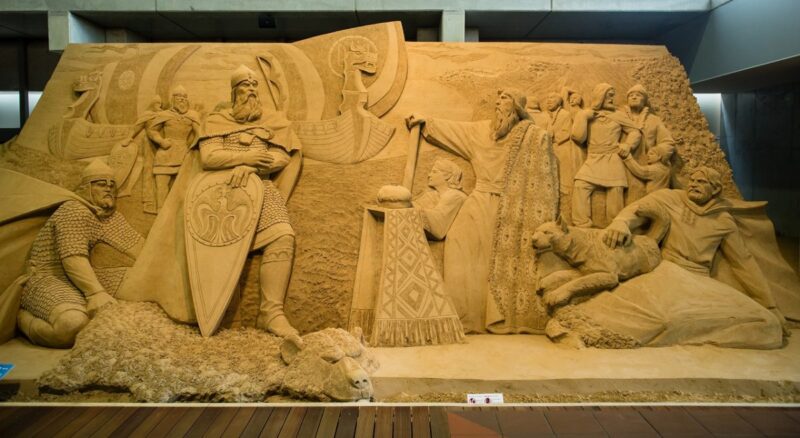
twoKim studio / Shutterstock.com
These sand statues are extremely fragile and fall down over time, so the museum always has a new exhibition to display in this amazing museum.
The Sand Museum
Business hours: Monday to Friday 9:00 – 16:00, Saturday 9:00 – 18:00, Sunday 9:00 – 16:00
Admissions: adults 600 yen, students (age 6-18) 300 yen
3. Improve your romance luck by visiting Hakuto Shrine!
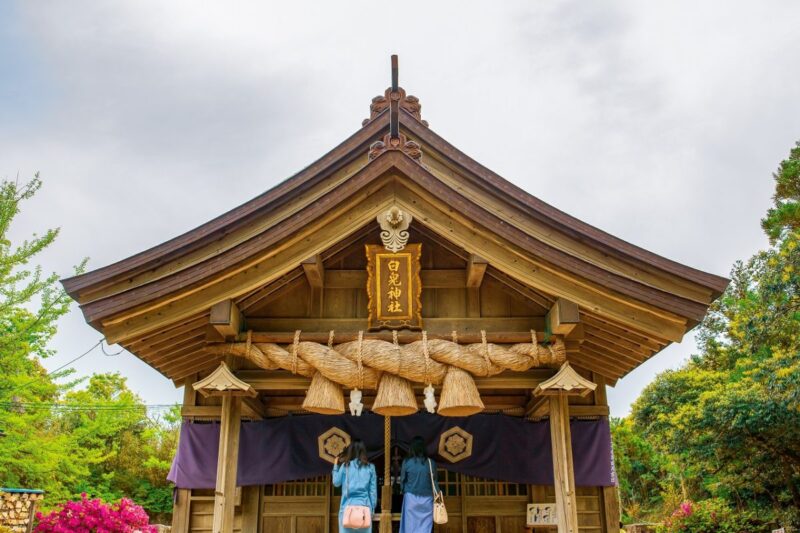
Hakuto Shrine is located on a beautiful seashore near Tottori City, and the shrine is famous for bringing good luck in romance. The shrine isn’t as big as other shrines, and it’s dedicated to the mythical “White Rabbit of Inaba”, a white rabbit who matched the God “Ookuni Nushi no Mikoto” and the princess “Yakami Hime”.
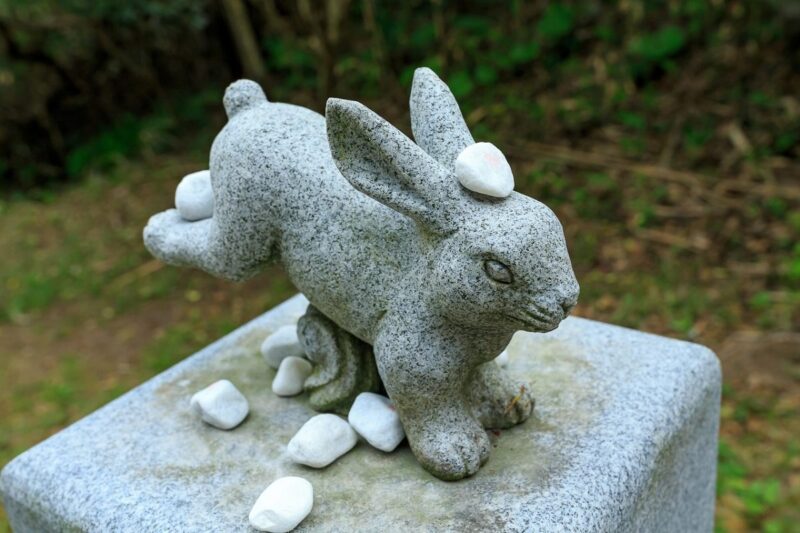
Since the myth of “White Rabbit of Inaba” is considered as the oldest love story in Japan, Hakuto Shrine is now known as the shrine of marriage. Many people from within and outside Japan visit the shrine, and it was elected as the first “Lover’s sanctuary” in Japan in 2010. Ever since then, the shrine has become more popular as a divine spot for love.
Hakuto Shrine
Business hours: 9:00 – 16:00
Open throughout the year
Access: about a 40-minute bus ride from Tottori Station
4. Stroll around the Mizuki Shigeru Road in Sakaiminato
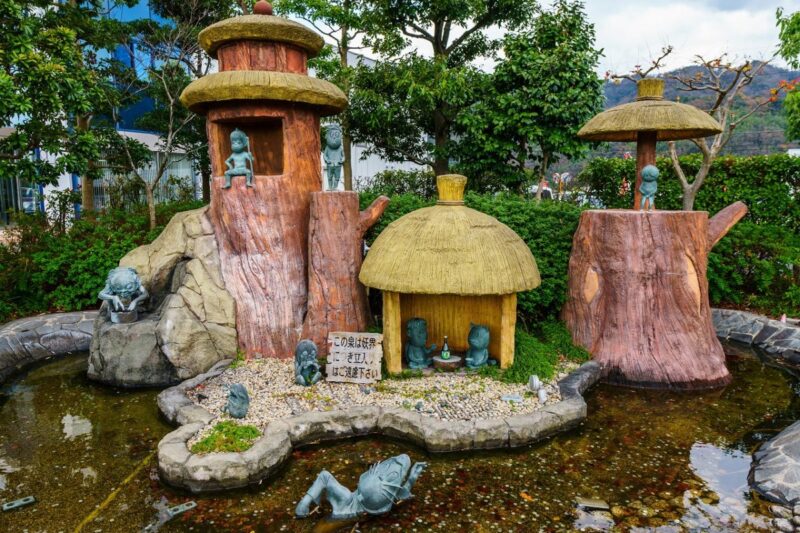
beeboys / Shutterstock.com
Sakaiminato City is the hometown of Mizuki Shigeru, a manga artist who created GeGeGe no Kitaro. Mizuki Shigeru Road is a street that is packed with numerous bronze statues of yokai monsters that appeared in GeGeGe no Kitaro.
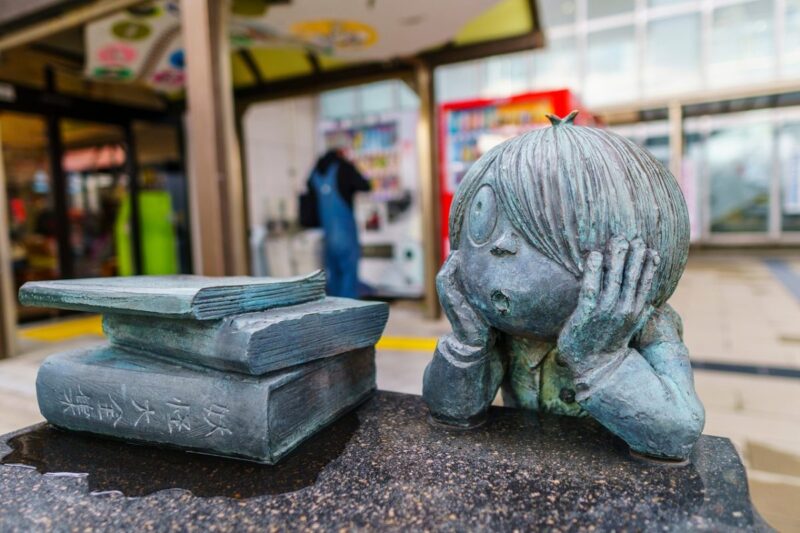
beeboys / Shutterstock.com
The street spreads over roughly 800 meters from JR Sakaiminato Station, and there are about 170 bronze statues of GeGeGe no Kitaro’s characters placed along the street. There are a lot of stores selling GeGeGe no Kitaro’s merchandises and sweets, so make sure to stop by if you love the series!
Mizuki Shigeru Road
Business hours: varies depending on each store
Access: a short walk from JR Sakaiminato Station
5. The most dangerous temple in Japan: Mt. Mitoku Sanbutsu-ji Temple
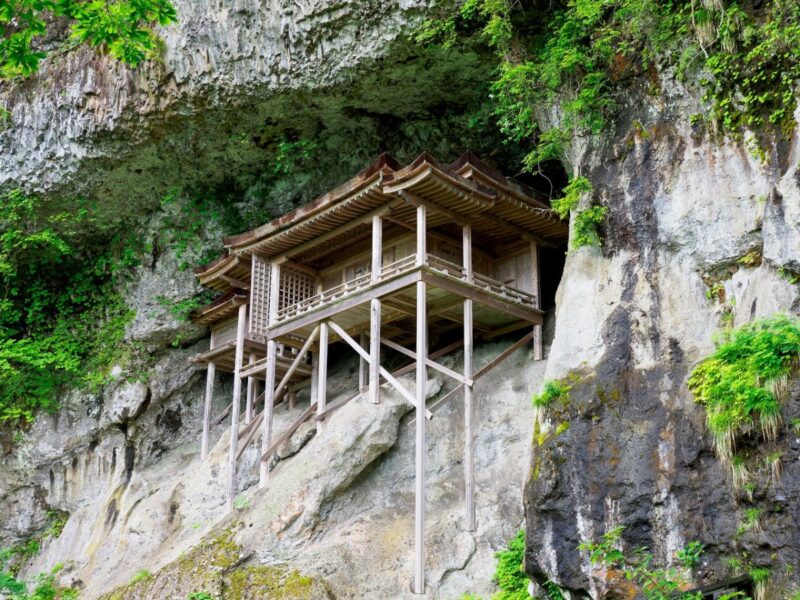
Sanbutsu-ji is a mountain temple located on a cliff of Mt. Mitoku, a 900-meter high mountain located in the middle of Tottori Prefecture. Considered as a sacred mountain by yamabushi, followers of Shugendo, Sanbutsu-ji was built into the mouth of a cave, and is designated as a one-of-a-kind national treasure.
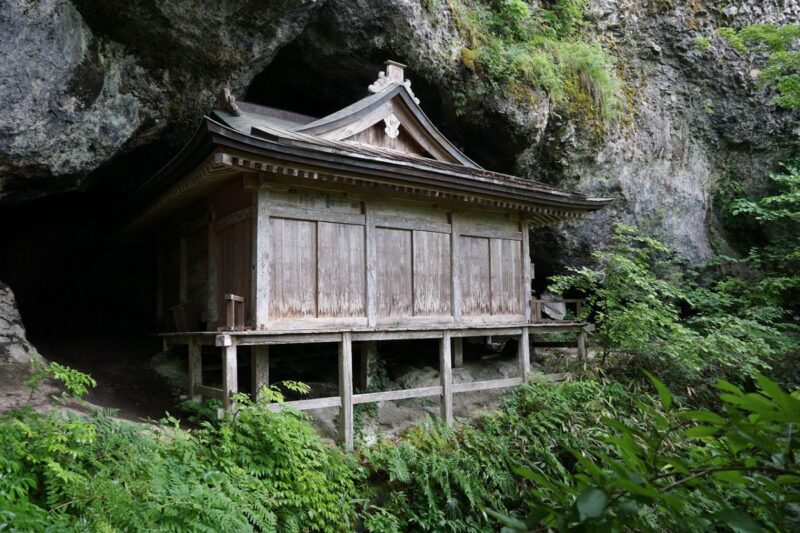
Nageiredo is located at 520 meters above sea level in Mt. Mitoku, which is known as the most dangerous national treasure in Japan. You need to climb the mountain and the cliff to visit Nageiredo, and there are a lot of rules to follow when climbing it.
Mt. Mitoku Sanbutsu-ji Temple
Business hours: 8:00 – 15:00
Open throughout the year
Admissions: (Main hall) adults 400 yen / age 6-18 200 yen; (Nageiredo) adults 800 yen / age 6-18 400 yen
Access: about a 40-minute bus ride from JR Kurayoshi Station
6. Meet with Detective Conan in Hokuei!
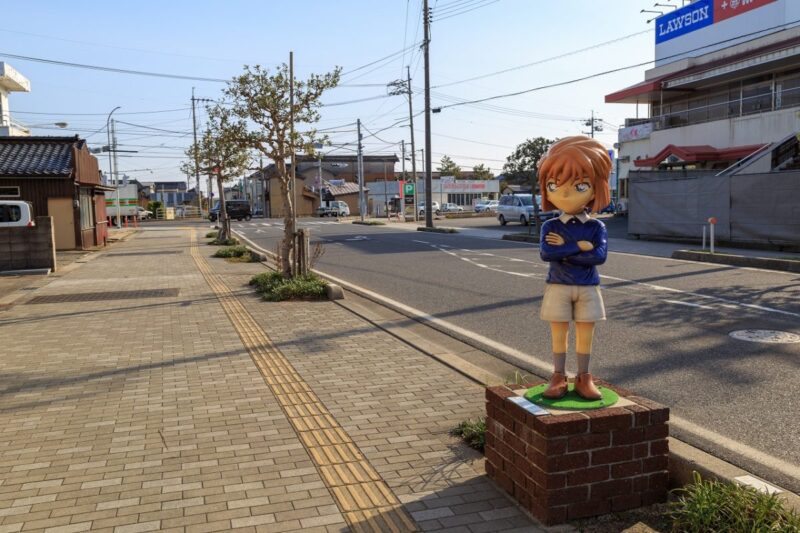
Thitikorn Suksao / Shutterstock.com
How about meeting Detective Conan in Hokuei?
Gosho Aoyama, the manga artist who created Detective Conan, was born and raised in Hokuei, Tottori.
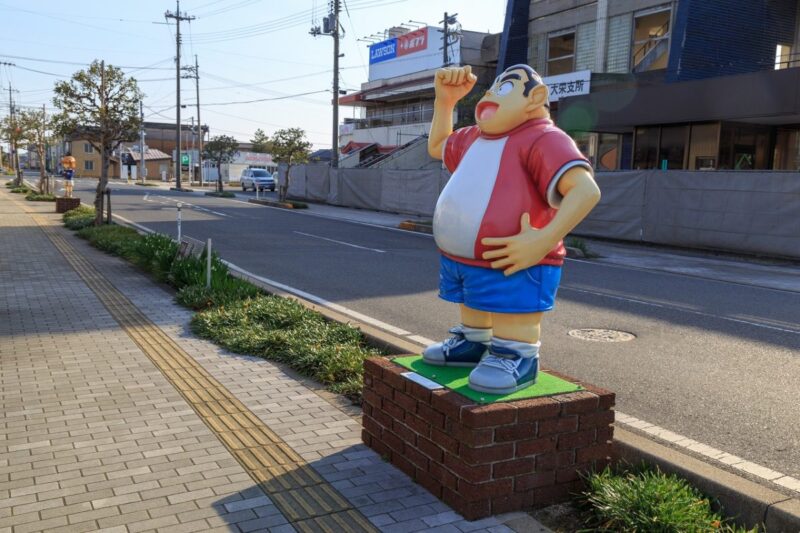
Due to Detective Conan’s massive popularity, Hokuei is now transformed into Conan Town, brimming with Detective Conan characters, from stone monuments to manholes; Hokuei is a paradise for Detective Conan lovers! The town also has many stores selling Detective Conan items and sweets. A museum dedicated to Gosho Aoyama and Detective Conan are also available for the public to visit, so if you have more time, don’t forget to visit the wonderful museum before leaving Tottori!
Conan Town
Business hours: varies depending on each store
Open throughout the year
Admissions: free
Access: about a short walk from JR Conan Station (Yura Station)
7. Enjoy a picture-perfect coastal scene at Uradome Coast
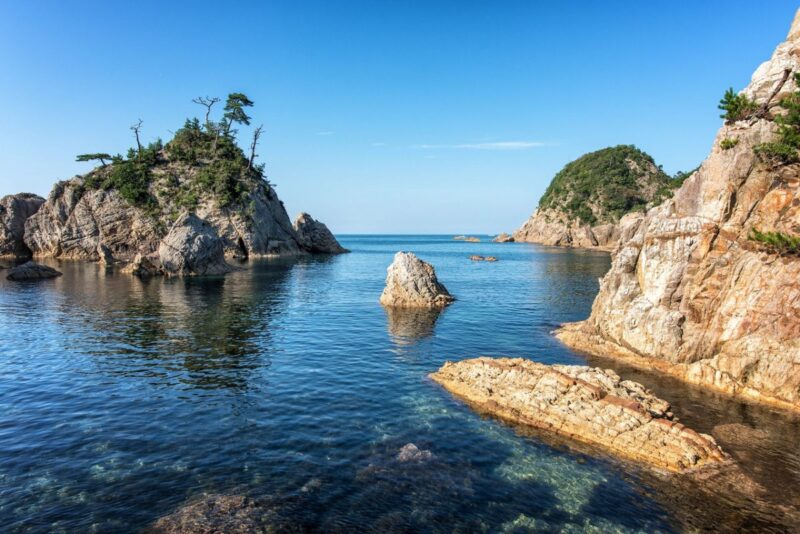
The Uradome Coast is located at the far eastern tip of Tottori Prefecture, and it stretches for about 15 kilometers, from Cape Kugami to Mt. Shichiyama. Marine erosion has formed a number of distinctive natural sea walls, cave, and jagged rocks. The coast is lined with white sandy beaches and shallow coves.
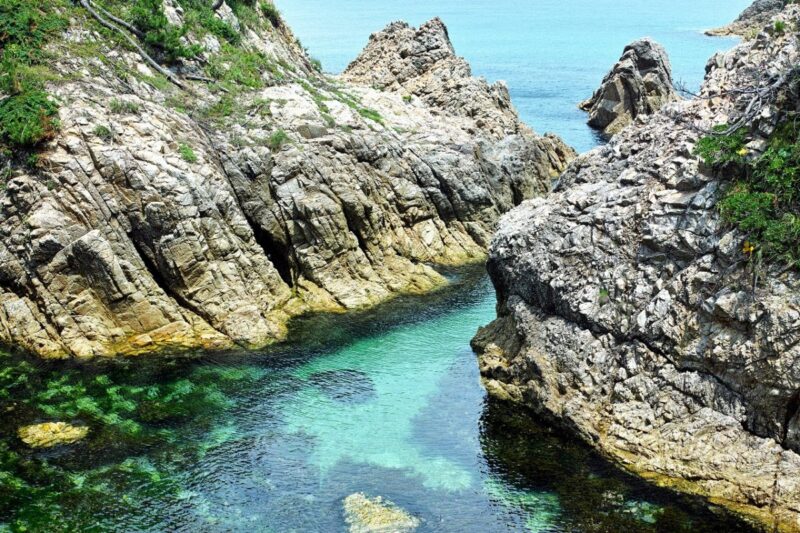
The coastline is an ideal place for swimming and snorkeling, as the water is crystal-clear and rich in nutrients and minerals. One of the most popular ways to enjoy the beauty of Uradome Coast is to join the cruise program.
Uradome Coast
Access: take the bus to the beach shore from JR Iwami Station.
A fifty-hectare flower park at the foot of Mt. Daisen
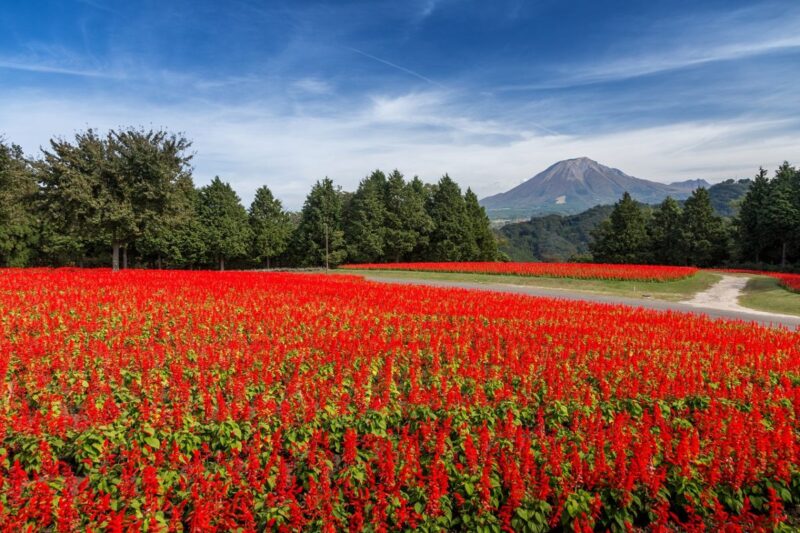
Tottori Prefectural Flower Park, which is known better as Tottori Hanakairo Flower Park, is a must visit spot near Mt. Daisen, particularly for its colorful flower fields that change every time the season changes.
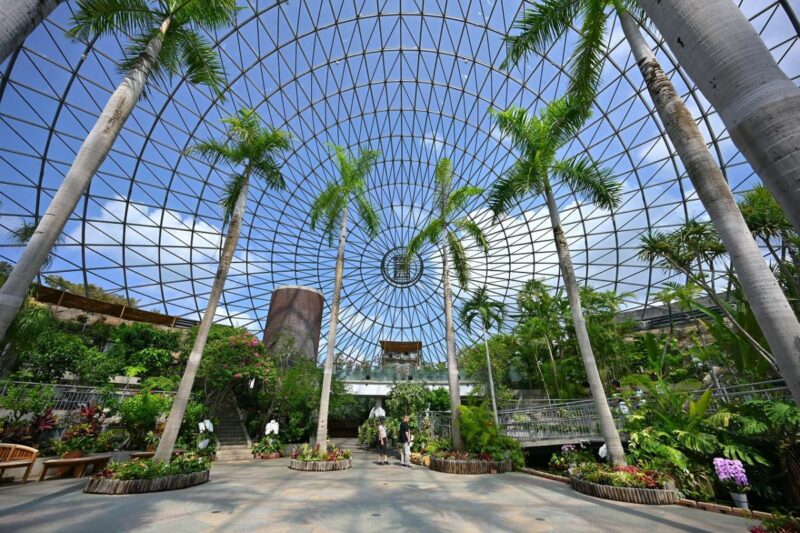
Kittipoom Ragtawat / Shutterstock.com
Opened in 1999, this flower park features Flower Dome, a greenhouse with a futuristic vibe. The flowers are also illuminated under the night sky, making the park the most photogenic spots in the region.
Tottori Prefectural Flower Park
Business hours: please refer to this page
Admissions: please refer to this page
Access: Take the free shuttle bus from Yonago Station
9. Explore the highest mountain in western Japan: Mt. Daisen
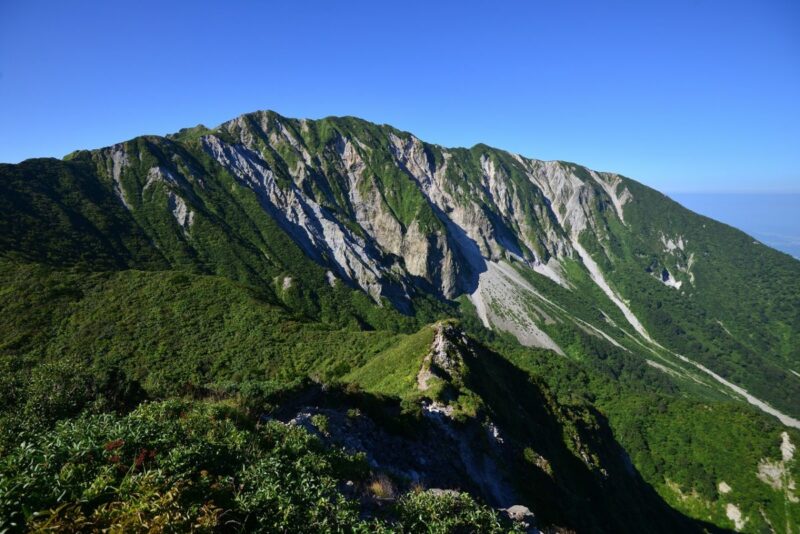
Mt. Daisen is the highest and the holiest mountain in the Chugoku region, with a height of 1729 meters. Yamabushi mountain ascetics have used Mt. Daisen as their spiritual training ground, and these days a lot of visitors would like to explore this sacred mountain.
Mt. Daisen
10. Visit Daisen-ji, an influential temple of Mt. Daisen
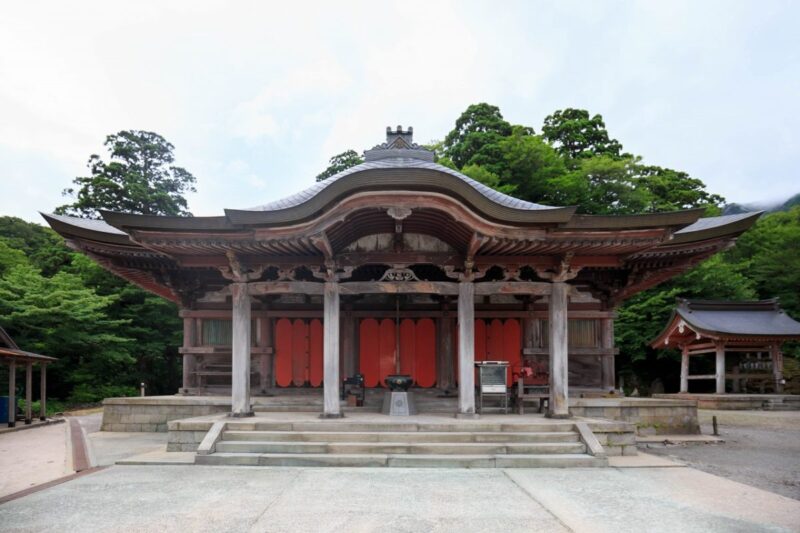
Located on Mt. Daisen, Daisen-ji is a compound of shrine and temple that were built in the 8th Century. The historical temple compound housed over 3000 monks in the past, and now people visit Daisen-ji to participate Zazen Experience or to enjoy the four seasons.
Daisen-ji
Business hours: 9:00 – 16:00
Tottori’s best local treats
Tottori is blessed with a warm climate and an excellent natural environment, and the prefecture is rich in local products harvested directly from the Sea of Japan, or its mountains and rivers. From matsuba crab to tofu chikuwa, wherever you go, scrumptious local treats await in Tottori. Here are our picks for the best foods to try when visiting Tottori!
1. Kani-meshi
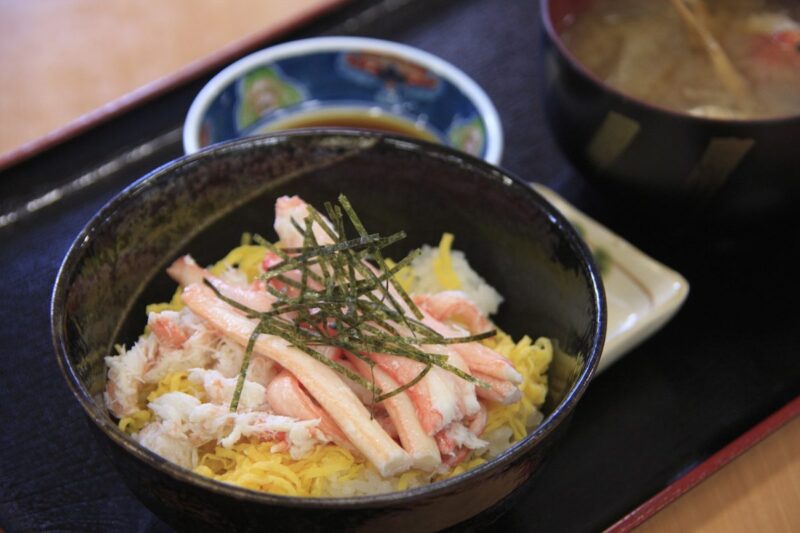
Tottori is home to numerous delicious crabs, and kani-meshi is a rice bowl topped with raw oyagani (female snow crabs) cut into thick chunks and seasoned with sake (rice wine), soy sauce, and mirin (sweet cooking rice wine), before it is steamed with water. Once the crab is cooked, the remaining meat from the shell, along with both inner and outer eggs, is mixed with the freshly cooked rice.
2. Tofu chikuwa
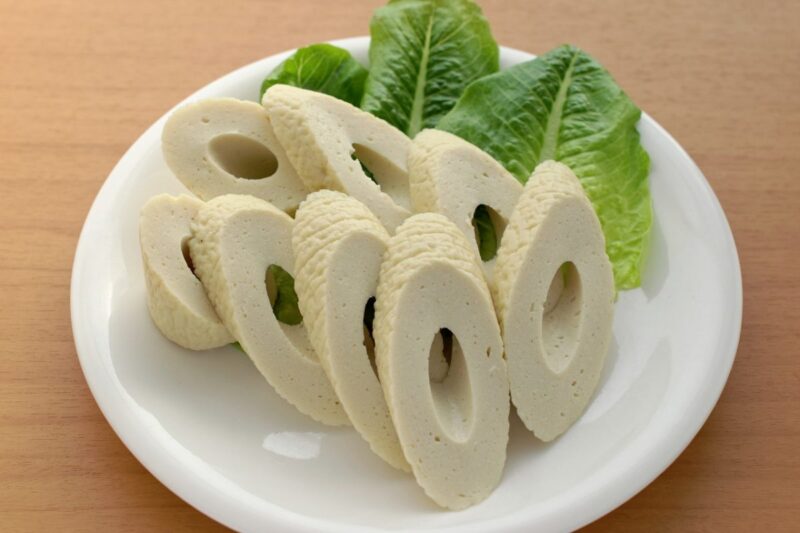
Don’t forget to try tofu chikuwa when visiting Tottori, particularly the mid-eastern region of the prefecture. Tofu chikuwa is made using firm tofu and minced white fish with the 7:3 ratio, creating a juicy chikuwa with delicate flavor and gentle tofu fragrance.
3. Matsuba crab
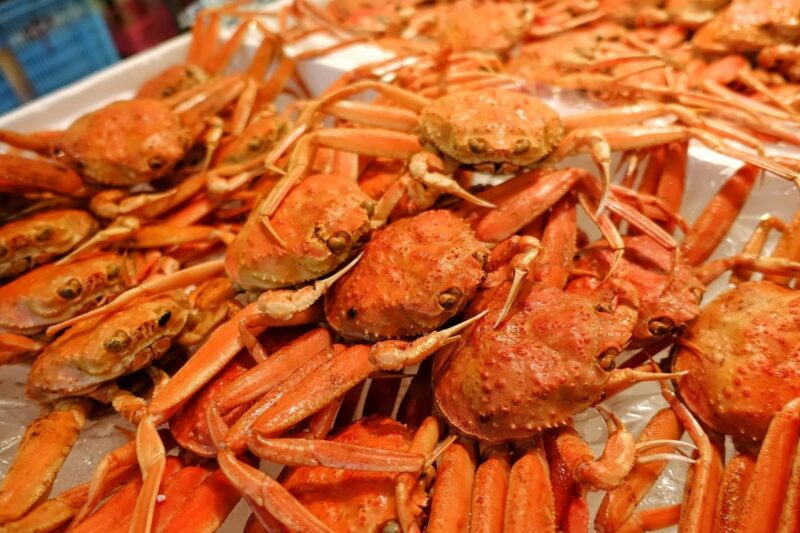
Matsuba crab is the adult male snow crab and is known as Tottori’s winter specialty, which are available from early November until March in the Sea of Japan’s high winter waves.
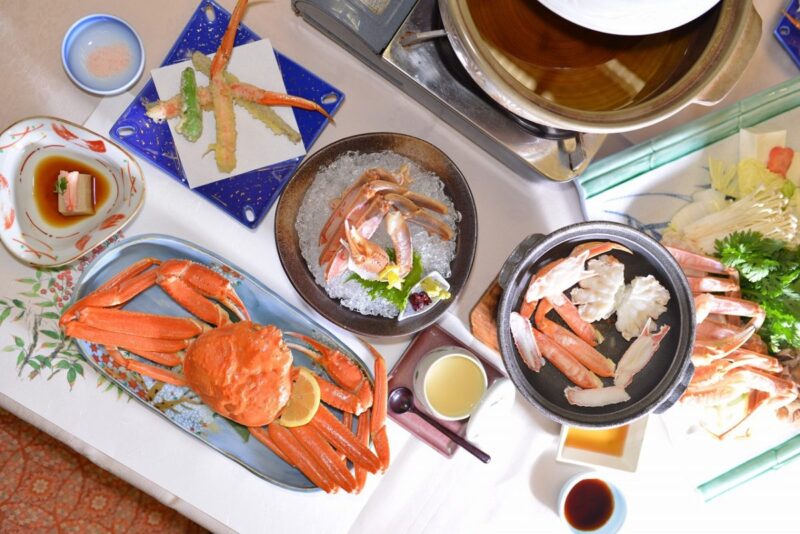
They are usually served as a course consisting of several different types of crab dishes made using the matsuba crabs. You can enjoy the crabs as sukiyaki, sashimi, tempura, or simply boiled.
4. Tottori beef
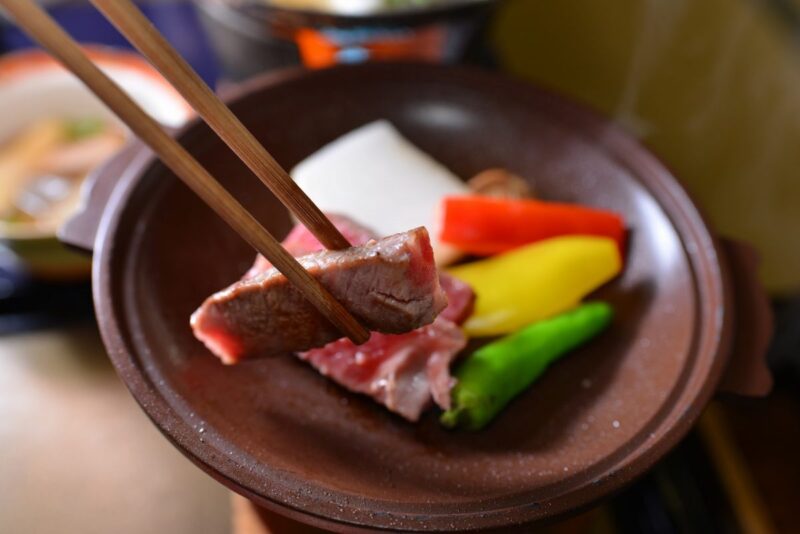
Tottori has been producing wagyu (Japanese beef) since the Edo period. The cattle in Tottori are known for its richness in oleic acid. The fat in Tottori wagyu is over 55% oleic acid, and this is the reason why the wagyu is named Tottori Beef Oleic Acid 55. Tottori’s beef has a tender texture and juicy flavor.
5. White squid

Tottori’s white squid is known for its bold sweetness and rich flavor, and it’s only available from early summer to late autumn. Tottori’s white squid is the swordtip squid, and it’s usually eaten as sashimi in the summer.
Now that you have an idea of how many fabulous spots are in Tottori, all you have to do is plan your itinerary to enjoy unforgettable experiences in Tottori!
